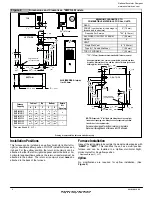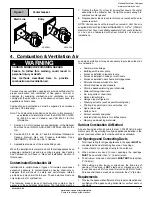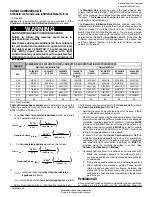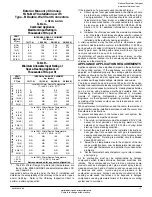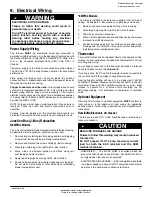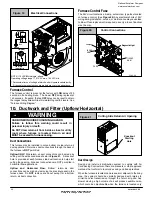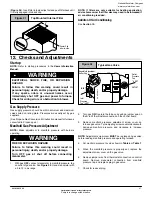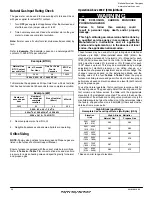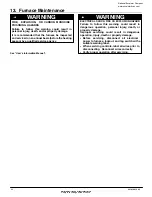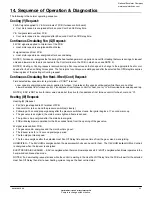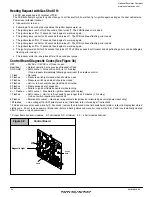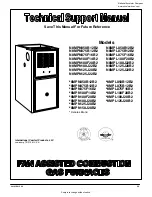
20
441 01 2613 05
Specifications are subject to change without notice
Typical Gas Piping (*8MP)
Figure 16
25-25-02
Representative drawing only, some models may vary in appearance.
Piping with Street Elbows
1. Screw one elbow onto gas valve with the outlet facing away
from the furnace.
2. Screw second elbow onto first elbow tight enough to be leak
proof. An additional
1
/
4
turn will be required at the end of step
2. See
Figure 17
and
Figure 18.
Figure 17
Gas Valve with Elbows (*8MP)
Representative drawing only, some models may vary in appearance.
Figure 18
Gas Valve with Elbows (*8MP)
Representative drawing only, some models may vary in appearance.
3. Gas supply line then can be run directly into opening of elbow.
Piping with Close Nipples and Standard Elbows
1. Assemble elbows and nipples similar to street elbows shown
in
Figure 13
.
2. Follow steps 2 through 4
Piping with Street Elbows.
FIRE OR EXPLOSION HAZARD
Failure to follow this warning could result in
personal injury, death and/or property damage.
A flexible corrugated metal gas connector must be
properly installed, shall not extend through the side
of the furnace, and shall not be used inside the
furnace.
Black iron pipe shall be installed at the furnace gas
valve and extend a minimum of 2
#
(50.8mm) outside
furnace.
!
WARNING
Additional Propane Piping Requirements
•
Have a licensed Propane gas dealer make all connections at
storage tank and check all connections from tank to furnace.
•
If copper tubing is used, it
MUST
comply with limitation set in
local codes, or in the absence of local codes, the gas codes of
the country having jurisdiction.
•
Two
!
stage regulation of Propane gas is recommended.
FIRE OR EXPLOSION HAZARD
Failure to follow this warning could result in
personal injury, death and/or property damage.
An open flame or spark could result in death,
personal injury and/or property damage.
Propane gas is heavier than air and will settle and
remain in low areas and open depressions.
Thoroughly ventilate area and dissipate gas. Do
NOT use a match or open flame to test for leaks, or
attempt to start up furnace before thoroughly
ventilating area.
!
WARNING
Final Check
•
Test all pipe for leaks.
•
If orifices were changed, make sure they are checked for
leaks.
•
During pressure testing of gas supply piping system:
a. If test pressure does not exceed
1
/
2
″
psig, isolate the
furnace from the gas supply piping system by closing the
equipment shutoff valve.
b. If test pressure exceeds
1
/
2
″
psig, the furnace and its
manual equipment shutoff valve must be disconnected from
the gas supply piping system.
•
Use a commercially available soap solution made specifically
for the detection of leaks to check all connections..
•
Do not use an open flame to test for gas leaks. Fire or
explosion could occur.
•
Correct even the smallest leak at once.
National Excelsior Company
www.excelsiorhvac.com
Subject to change without notice.

